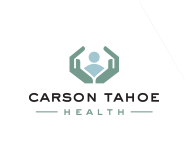
Heart attack is the No. 1 killer of both men and women in the United States. More than a million people will suffer a heart attack, also called a myocardial infarction, this year. Statistics show 58 percent of these attacks will be fatal. What happens to the other 42 percent? That depends, to a large extent, on how fast they get treatment. Heart attacks result in the death of muscle tissue. That death occurs when blood flow is severely restricted or stopped due to a blockage. Remove the blockage, and the blood flow is restored. The faster the blood flow is restored, the less damage occurs.
Fortunately, there are two ways that doctors can help to remove the blockage: Coronary angioplasty, and clot-dissolving drugs. Sometimes we use both. Because the clot-dissolving drugs have the side effect of bleeding elsewhere in the body, and because they’ve been found to be a bit less effective, for most patients, the first choice is PTCA, commonly known as angioplasty.
Studies show that angioplasty has an 85-95 percent success rate in opening up blocked arteries. The doctor inserts a catheter into the patient’s artery, usually, the femoral artery near the groin or the radial artery in the wrist feeds it up to where the blockage is in the heart, and inflates a very small balloon, just for a second, to squish the blockage against the wall of the artery. This provides an open tunnel for the blood flow to resume. You’re awake the whole time.
Stents, which are tiny stainless steel mesh cylinders that look like miniature Slinkys, can be inserted into the artery to keep it open. This procedure can restore blood flow rapidly, thus saving the distal muscle. And the best part is, you can usually go home in a day or two.
Studies show that if your heart blockage can be opened within 90 minutes, your chances of survival are raised dramatically. Of those, 25 percent of people who present with an evolving heart attack and receive angioplasty experience no permanent muscle damage at all. The other 75 percent can have much better outcomes.
So what’s the catch? Time is of the essence, and not all hospitals are equipped to perform angioplasties. If you’re taken to a hospital that isn’t equipped, you’ll need to be transported again. That takes time, which, as you know, can cost you heart muscle.
Here, there is only one hospital equipped and staffed to perform angioplasties and that’s Carson Tahoe Health. Smaller clinics and hospitals may be OK for some things, but if you think you’re experiencing a heart attack, get yourself to CTH. Be proactive: Know the signs, get help immediately, and know where you want to go. It could save your heart.
Dr. Juneau is a board-certified Cardiologist with Carson Tahoe Cardiology.







